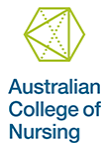Paediatric Intensive Care Nursing

This unit of study has been designed to explore issues specific to nursing practice in a specialist paediatric intensive care setting. Topics explored in this unit of study include advanced concepts in haemodynamic monitoring, ventilation, analgesia and sedation, management of complex cardiac and neurological patients, renal replacement therapies and multi-organ dysfunction syndrome. The unit of study maintains a focus on the collaborative relationship between the nurse and the family/significant others in providing care to the critically ill infant, child or adolescent.
Term :JANUARY, JULY
Hours of Study: 150
Credit Points : 6
The student must be working in an intensive care setting where there is a paediatric case mix
Theme 1: Evolution of paediatric intensive care
Apply knowledge of advanced concepts of invasive monitoring to the early recognition of deterioration in critically ill infants, children and young people
Theme 2: Haemodynamic monitoring
Integrate the use of contemporary assessment tools in the management of critically unstable infants, children and young people
Theme 3: Ventilation
Critically appraise treatment protocols used in paediatric intensive care against current research and evidence based guidelines
Theme 4: Analgesia and sedation
Review the pathophysiology that underpins presentations of critically ill infants, children and young people to inform nursing interventions and optimise outcomes
Theme 5: Postoperative management of the cardiac surgical infant/child
Reflect on the central role of family & culture when negotiating care with infants, children, young people and their families, ensuring inclusive and respectful healthcare delivery
Theme 6: Management of infants/ children with serious neurological insults
Theme 7: Renal replacement therapies
Theme 8: Multiorgan dysfunction syndrome
Theme 9: Stabilisation & transport
- Anaesthesia Fundamentals | Anatomy | Hazards of Po...
- Posted By eIntegrity Healthcare e-Learning
- Posted Date: 2024-11-25
- Location:Online
- The patient positioned for surgery is vulnerable to extraneous harm. Knowledge of the common injuries and understanding of the causes of harm enables the anaesthetist to minimize the risks.
- Anaesthesia Fundamentals | Anatomy | Bones And Joi...
- Posted By eIntegrity Healthcare e-Learning
- Posted Date: 2024-11-25
- Location:Online
- This session describes the anatomy of the upper and lower limbs, concentrating on the bones and joints. Particular attention is paid to those bones and joints that are of importance to the anaesthetist.
- Anaesthesia Fundamentals | Anatomy | Facial Skelet...
- Posted By eIntegrity Healthcare e-Learning
- Posted Date: 2024-11-25
- Location:Online
- This session describes the bones of the facial skeleton and skull vault. The important muscles that move the mandible are described. The classification and positions of fracture lines commonly seen following trauma to the face and surgical osteotomy are a
- Anaesthesia Fundamentals | Anatomy | Spine Part 2:...
- Posted By eIntegrity Healthcare e-Learning
- Posted Date: 2024-11-25
- Location:Online
- This session covers the anatomy of the sacrum, coccyx and sacral hiatus. It describes the intervertebral discs and spinal ligaments, and the vertebral levels of some of the surface markings of the body. The different types of spina bifida are reviewed.
- Anaesthesia Fundamentals | Anatomy | Spine: Cervic...
- Posted By eIntegrity Healthcare e-Learning
- Posted Date: 2024-11-25
- Location:Online
- The session covers the anatomy of the bones of the vertebral column in the cervical, thoracic and lumbar regions.


